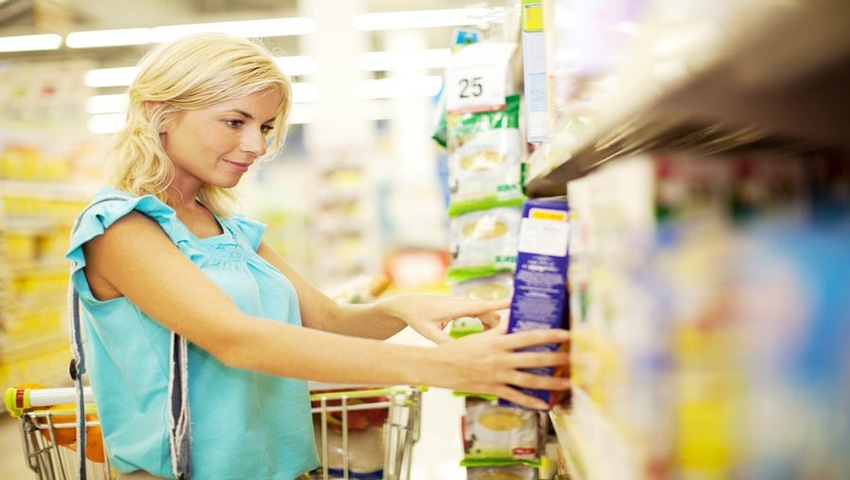R&D Solutions: Keeping It Clean from the Start
Everyone wants their product to hit all the current trend buttons—natural, clean label, locally sourced, GMO-free, organic, etc.—but sometimes there needs to be a compromise in order to ensure the food or beverage being created is safe and affordable.
September 28, 2016

Lots of start-up companies are asking how they can keep their label “clean" and ensure their product has no preservatives, is all-natural and uses fresh local ingredients—all the while being affordable and shelf stable.
Everyone wants their product to hit all the current trend buttons—natural, clean label, locally sourced, genetically modified organism (GMO)-free, organic, etc.—but sometimes there needs to be a compromise in order to ensure the food or beverage being created is something that is both safe and affordable. What’s more, it is important to understand that just because an ingredient sounds like it is not natural, the opposite might be true.
Let’s start with mold inhibitors. Anyone who wants their somewhat-moist baked good to last on the shelf is going to have to keep the fuzzy stuff at bay, and there are a wide variety of natural and synthetic options to choose from. Potassium sorbate, for example, is a great yeast and mold inhibitor that is inexpensive and works in a wide variety of pHs and food bases. And while it’s not natural, it gets the job done.
Sodium benzoate is also an inexpensive synthetic that keeps the bad bacteria at bay, but natural options can get the job done too. For example, cultured dextrose is a clean-label bacteria inhibitor created via fermentation of milk and sugar with probiotic organisms that works in a wide variety of applications like salad dressings and cured meats, soups and dairy products. While cultured dextrose costs more, it allows a formulator to maintain a “natural" statement on the product label, assuming all other ingredients are natural as well.
Cooking the product also can get the job done. For example, canned foods and jarred shelf-stable sauces often rely on heat as the preservation method; however, any thermal process must be approved by a local health inspector and FDA. Another option would be to add tons of salt or sugar, which can inhibit bacteria by lowering the water activity of the product.
The issue of clean-label flavor is also a trending topic. No one in the specialty food industry wants to put artificial flavor in their products, but keep in mind the fact that natural flavors are more expensive and less concentrated than artificial, so more of the ingredient will be required to get a flavor impact. For example, a lemon cake may only need 0.02-percent artificial flavor, but it would require using 2 to 3 percent of a costlier natural flavor to get the same effect. So what is the solution? A formulator could use a flavor called WONF (with other natural flavors) that is a blend of similar flavors used to make up the flavor you like but at a slightly reduced cost, or the formulator could ask their flavor supplier for an “off the shelf" or stock flavor they may already sell to several companies and probably produce in bulk at a cheaper price. Case in point, talk to the flavor supplier about options.
Even starches have clean-label options. If a starch is referred to as a “modified food starch," then it is not a natural thickener. Formulators need to ask their supplier to provide a natural “unmodified" food starch.
Other methods to thicken a product include dehydration or evaporation of water, using tomato paste (if the product is tomato based), or experimenting with gums and hydrocolloids. Most hydrocolloids like xanthan, gum arabic and gum acacia are natural. Gum supplier websites have a wealth of information about gums and to use them to improve everything from particulate suspension to moisture retention in your food products.
Natural alternatives are always available in the world of ingredients, and it’s just a matter of balancing out what is needed with the right price point.
Looking to get in on the clean label trend? Understanding consumer demands, formulation considerations and supply chain considerations is critical. Join us for the Delivering on the Clean Label Expectation All-Day Summit on Wednesday, Oct. 5, at SupplySide West 2016.
Rachel Zemser, CCS, CFS, is a certified food scientist and independent consultant in the San Francisco Bay Area. A corporate food scientist turned consultant, she helps entrepreneurs understand the ins and outs of the food industry and provides the technical assistance they need in bringing their product to market. A trade show junkie, she attends as many ingredient shows as possible to ensure she is always up to speed on innovative flavor trends and ingredients.
About the Author(s)
You May Also Like




.png?width=800&auto=webp&quality=80&disable=upscale)